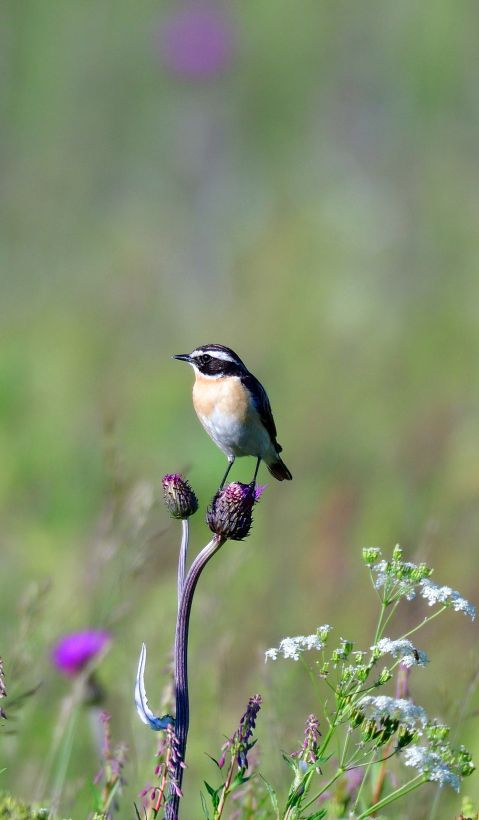
Why this project?
To make better use of experience from agricultural practice: CAP4GI aims to contribute to knowledge-based and more effective design of environmental measures. This is because biodiversity in agricultural landscapes has been declining rapidly for decades. Among the main causes of the decline in biodiversity are intensification in agriculture and the loss of structural diversity in agricultural landscapes.
The European Union's Common Agricultural Policy (CAP) has a significant influence on the design and condition of agroecosystems. In the past CAP funding periods, measures to improve biodiversity have been increasingly promoted. However, the design of the measures has so far not been sufficient to achieve a trend reversal for biodiversity in agricultural landscapes. In order for biodiversity measures to be implemented effectively and in the long term, they must also be financially worthwhile for farmers and fit organizationally into their business operations.
CAP4GI examines farmers' choices: which measures they implement, which ones not, and the obstacles they face. The project develops and evaluates innovative approaches for implementing and rewarding biodiversity enhancing measures, which can potentially achieve both biodiversity and farm benefits.
What is the goal of the project?
The goal of CAP4GI is:
- to promote the cooperation of farmers for nature conservation measures
- to gain a deeper understanding of the decision-making processes of farmers
- to develop models on the socio-economic and environmental impacts of agricultural support.
- to derive recommendations for a more ecologically effective and economically efficient design of the CAP
- to better align the design of future agricultural policies with biodiversity goals.
What is the research approach of the project?
CAP4GI combines different research approaches:
By means of qualitative and quantitative interviews as well as Discrete Choice Experiments (DCE) with farmers, the project investigates:
- Preferences of farmers for agri-environmental measures
- which factors lead to these preferences of the farmers
- The importance of different factors in farmers' decisions about which measures they implement and which ones they do not implement
- which socio-cultural barriers hinder the implementation of measures
This approach is complemented by a combination of sociological agent-based modeling and ecological individual-based modeling:
- Agent-based modeling will be used to simulate how different funding approaches for biodiversity enhancing measures affect farmers' decisions and how this changes the landscape.
- Individual-based modeling will be used to examine what impact these landscape changes would have on the state of biodiversity.
Who is the project aimed at?
Farmers and agricultural enterprises are at the center of the project. In addition, CAP4GI also is directed at political decision-makers, administrations and authorities, researchers and non-governmental organizations.
Through project-accompanying exchange platforms, farmers are directly involved in the development of research instruments and the evaluation of research results. These exchange platforms are carried out in a total of six model regions in Baden-Württemberg and Thuringia:
- Baden-Wuerttemberg:
- Hohenlohe
- Northern Upper Rhine
- Lake Constance
- Thuringia:
- Eichsfeld
- Thuringian Basin
- East Thuringian red sandstone area
In both federal states, there are also exchange platforms at the state level, where the participants of the three regional platforms of each federal state meet. In addition, representatives from politics, administration, consultancy and nature conservation can contribute to the process and exchange ideas with the farmers.
At the end of the project, there will be recommendations for the development and improvement of funding instruments. These can be used by policy makers and administrators to design environmental measures and payments for ecosystem services that promote biodiversity but also take into account the business needs of farmers.
What does co-design mean?
CAP4GI follows the approach of co-design. This refers to participatory methods through which key stakeholders are involved in the process of developing solutions and decisively shape them. Stakeholders can thus contribute their knowledge and experience so that the developed solutions are more suitable and relevant for application in practice and thus often also find broader acceptance for implementation.
CAP4GI primarily engages farmers from the six project regions in Thuringia and Baden-Württemberg, but also, for example, actors from administration and nature conservation. During the exchange platforms, the participants decide how and on what kind of solution they want to work on. The developed solutions to improve the implementation of biodiversity measures on and next to agricultural land represent an independent project result.
In addition, farmers and other stakeholders are involved in the design of the research:
- They participate as research subjects in interviews and the Discrete Decision Experiment.
- They check the fit of the developed socio-economic model with their reality and suggest improvements.
- They help to decide which alternative scenarios are investigated with the help of the models in terms of their effects on biodiversity. "Alternative scenarios" here stand for innovative forms of implementing and rewarding biodiversity-promoting measures.
- They evaluate the modeling results.
What are the framework conditions of the project?
The project is coordinated by adelphi research gGmbH and implemented together with five collaborative partners (Helmholtz Centre for Environmental Research-UFZ/iDiv, University of Rostock, Lake Constance Foundation, Wildtierland Hainich, Deutscher Naturschutzring). It runs from November 2021 to April 2025 and is funded by the Federal Ministry of Education and Research (BMBF) as part of the Research Initiative for Biodiversity Conservation (FEdA).
